By Al Hemingway
Just months after General Douglas MacArthur made his way from Philippines via PT-boat to reach Australia, Allied forces, mostly composed of Australian and native troops, took the offensive against the enemy to New Guinea. From July to November 1942, a series of pitched battles and numerous skirmishes took place on the Kokoda Trail, or Track, as the Aussies referred to it.
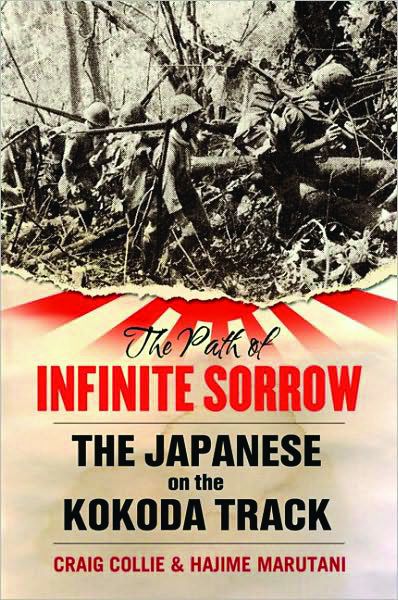 In their new book, The Path of Infinite Sorrow: The Japanese on the Kokoda Track (Allen & Unwin, New South Wales, Australia, 2010, 324 pp., photos, maps, notes, index, $24.95, softcover), Craig Collie and Hajime Marutani examine the Kokoda campaign with a fresh twist, from the viewpoint of the Japanese survivors.
In their new book, The Path of Infinite Sorrow: The Japanese on the Kokoda Track (Allen & Unwin, New South Wales, Australia, 2010, 324 pp., photos, maps, notes, index, $24.95, softcover), Craig Collie and Hajime Marutani examine the Kokoda campaign with a fresh twist, from the viewpoint of the Japanese survivors.
The Kokoda Trail winds its way from outside Port Moresby on the island’s southeast coast to Buna on the northeast shoreline. The distance of the single-file path is estimated to be anywhere from 40 to 60 miles, through the Owen Stanley Mountains, in some of the most rugged and treacherous terrain in the world.
Soon after the Japanese landings at Buna, Gona, and Sanananda, the two sides clashed. Elements of the 39th Battalion fought at Awala. A platoon from Captain Sam Templeton’s Company B attempted to halt the Japanese advance but had to withdraw. The Kokoda airstrip was eventually seized by the Japanese after a spirited defense by the Australians. Soon, Australian units began to pour into New Guinea to reinforce the beleaguered 39th Battalion.
Despite the hardships faced by the Allies, the Japanese had it much worse during the campaign. Disease and malnutrition took their toll. As supply transports were sunk, the Japanese soldier was forced to do the unthinkable—eat the flesh from the dead—becoming a cannibal.
When Buna fell, the enemy camp at Giruwa was encircled and came under intense air and ground attacks. Their supply lines severed, one survivor of the battle described the horrific ordeal to the authors.
“No one who was at Giruwa could have survived that siege without eating human flesh,” claims (Private Kokichi) Nishimura, “and that was the truth of it. Nobody wanted to do it, but it was their last resort. It was eat, or die.”
By the beginning of 1943, Japanese resistance on New Guinea had ceased with the fall of Buna and Gona. It was not until March 1943, that the remnants of the once mighty 41st and 144th Regiments were evacuated by barge from the hellish fighting they had suffered in New Guinea. When one newly arrived Japanese officer complained that the survivors did not salute him, one individual remarked: “Well, we are no longer soldiers, just skeletons disguised as humans.”
The Japanese suffered an estimated 6,500 casualties during the six-month-long campaign. It was indeed brutal. The rules of the Geneva Convention were routinely disregarded—prisoners were usually summarily executed—on both sides. Some Japanese were convicted of war crimes after the war, including the murder of two female missionaries.
But it was the common foot soldier who endured incredible suffering during the struggle for control of the Kokoda Trail, with the Japanese infantryman experiencing the worst of it. Because of an ill-conceived strategy, their ranks were decimated.
When Corpsman Yori-ichi Yokoyama returned to New Guinea in 2005, he brought along 250 pairs of sandals in the memory of his fallen comrades. He dropped some in the Kumusi River, and one of the authors placed the rest of the shoes along the trail.
“The demons in the far reaches of Private Yokoyama’s imaginings had been chased away,” they wrote. “By his gesture, the spirits of men in the 41st and 144th Infantry Regiments of the Imperial Japanese Army were now able to march freely back up the path of infinite sorrow to a better world.”
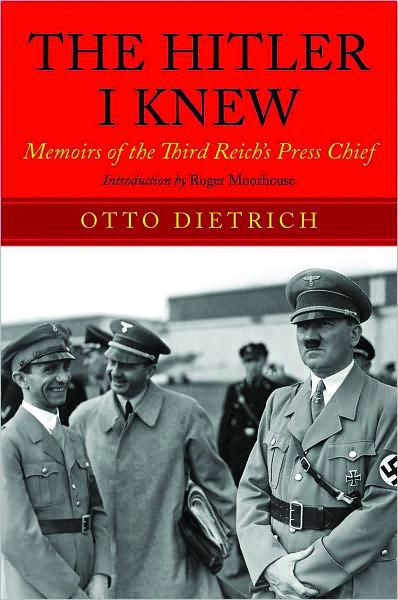 The Hitler I Knew: Memoirs of the Third Reich’s Press Chief, by Otto Dietrich, Skyhorse Publishing, New York, 2010, 242 pp., photos, $24.95, hardcover.
The Hitler I Knew: Memoirs of the Third Reich’s Press Chief, by Otto Dietrich, Skyhorse Publishing, New York, 2010, 242 pp., photos, $24.95, hardcover.
Here is a captivating book by a virtually unknown personality in Adolf Hitler’s inner circle. Otto Dietrich, a decorated World War I soldier, attended school after the conflict, but became disenchanted with German society and where it was headed. He became fascinated with the Nazi Party, joining its ranks. In 1931, he met and became a close associate and confidante to Hitler; it was a friendship that would last until the waning days of World War II.
Dietrich was captured by the British and was imprisoned for war crimes. His seven-year sentence was reduced to only 18 months, but he spent that time in isolation to pen this account of his intimate view of Hitler’s life. Dietrich did not want his manuscript to be published until after his death. He passed away in 1952, and his manuscript was finally released in 1955. It serves as an insight into the inner workings of the maniacal despot who took Germany to unmitigated disaster in 1945.
Hitler was a man of contradictions, according to Dietrich. A person who sent millions to their deaths in his infamous concentration camps, he had a strong empathy for animals. He forbade hunting on his estate and, at one point, forbade newspapers from even mentioning the subject.
Perhaps his favorite room in the Berghof, his home in the Austrian Alps, was the main salon. Here he frequently met with his high command to plot strategy and make military decisions. It was here, comments Dietrich, that the German leader witnessed his many victories—as well as his numerous setbacks and defeats. Nonetheless, this “imposing room” saw his emotions range from extreme ecstasy to violent outbursts.
Another fascinating point that Dietrich makes is Hitler’s lack of a family life. He states that his step-brother, who operated a restaurant in Berlin, could not be discussed in his presence. His decision not to marry and have a family put him at a severe disadvantage with other people. His disastrous relations with females were another important aspect of the Führer’s life, and how he perceived his surroundings.
“Of the six women who stood in a close relationship to him in his life, five died by suicide, or had attempted suicide,” writes Dietrich.
Historian Roger Moorhouse, who wrote the introduction, does criticize Dietrich for making scant mention of the Holocaust and his part in it. In his opinion, however, Dietrich skillfully examines Hitler’s personal and political life. There were two vastly different views of the man—one a father-like personality to the German people, the other a “diabolical megalomaniac.”
“Otto Dietrich was an important eyewitness from the period of the Third Reich,” says Moorhouse. “Representative of the middle-class, intellectual wing of Nazism, he was highly educated and politically aware, yet also one who clearly suffered from a profound moral myopia. His book is as fascinating for its observations, as it is for its omissions.”
 The Battle for Norway, April-June 1940 by Geirr H. Haarr, Naval Institute Press, Annapolis, MD, 2010, 458 pp., index, notes, photos, maps, $52.95, hardcover.
The Battle for Norway, April-June 1940 by Geirr H. Haarr, Naval Institute Press, Annapolis, MD, 2010, 458 pp., index, notes, photos, maps, $52.95, hardcover.
Because of its dependence on iron ore, Germany considered Norway of vital importance during World War II. By seizing its seaports, the Nazis could ship the material to plants for their war machine. When the country was invaded, both Great Britain and France sent troops to the beleaguered nation to defend against the German onslaught. Unfortunately, when France was on the brink of collapse, the Allied expeditionary force was withdrawn, and Norway was left to face the enemy juggernaut on her own.
The author, Geirr Haarr, who resides in Norway, focuses on the naval campaign of the German invasion. It was dubbed Operation Weserubung by the Nazis and, as Haarr points out, it “was the first modern campaign in which sea, air and ground forces acted together so decisively.”
Unfortunately, the major events taking place in and around Norway were eclipsed by the subsequent fall of France and the hasty evacuation of Allied forces at Dunkirk. Nevertheless, the Norwegians fought bravely and, with the exception of the Soviet Union, they held out against their attackers for the longest period of time.
Although the invasion was very successful in terms of occupying the country, the German Navy suffered the loss of numerous vessels. Because of this, they could not reap all the strategic benefits from their victory. However, when Operation Barbarossa, the invasion of the Soviet Union, was launched in 1941, Norway was utilized as the jumping-off point for air and sea assaults to cut the Russian supply route. Ironically, the iron ore that Germany had so desperately wanted could now be procured in France.
Haarr has written an excellent account of his country’s struggle to repel the German forces despite the odds. It is a must-read for all who want to learn more about the often neglected Norwegian campaign.
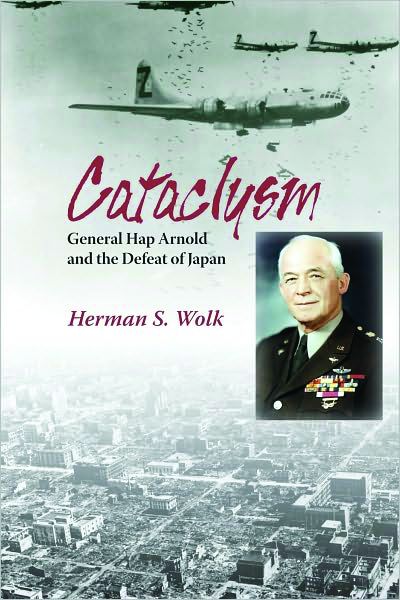 Cataclysm: General Hap Arnold and the Defeat of Japan by Herman S. Wolk, University of North Texas, Denton, 2010, 300 pp., notes, index, photos, $24.95, hardcover.
Cataclysm: General Hap Arnold and the Defeat of Japan by Herman S. Wolk, University of North Texas, Denton, 2010, 300 pp., notes, index, photos, $24.95, hardcover.
In his new book, retired U.S. Air Force senior historian Herman Wolk asks a very intriguing question: who was Hap Arnold? He was condemned by his critics for being very impatient, rigid in his thinking, and lacking education and sophistication. Yet, it was General Henry Harley “Hap” Arnold who created the 20th Air Force, put General Curtis LeMay in charge of the unit and, helped shape the strategic bombing campaign against Japan with the new Boeing B-29 Superfortress bomber.
The controversy over strategic bombing, most notably the fire bombing of Japan, will always be argued among historians. Arnold staunchly believed that the country would capitulate by a massive air campaign and a naval blockade, and a ground invasion would not be necessary. Although ostensibly this strategy would definitely save American lives, Arnold had other ideas in mind. He very much wanted an independent air force. If the massive B-29 air campaign could prove successful, it just might become a reality, which it did in 1947 with the National Security Act.
Arnold was indeed a visionary. He was always concerned about the opinion of the American people and, as Wolk writes, “Arnold had a genuine appreciation for the democratic process.”
As Arnold once said: “Air Power will always be the business of every American citizen.”
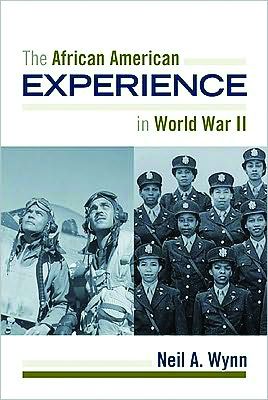 The African American Experience During World War II by Neil A. Wynn, Rowman & Littlefield Publishers, Inc., New York, 2010, 163 pp., notes, index, photos. $34.95, hardcover.
The African American Experience During World War II by Neil A. Wynn, Rowman & Littlefield Publishers, Inc., New York, 2010, 163 pp., notes, index, photos. $34.95, hardcover.
This is one book in a series that focuses on the experiences of African Americans in the U.S. military during World War II. Clearly, the black men and women who served during that time paved the way for the civil rights movement that was to engulf the nation two decades later.
Whether it was stateside or overseas, black service personnel were subjected to discrimination by their commanding officers and white soldiers. At times, the confrontations turned bloody.
In the fall of 1942, soldiers from the 364th Infantry shot and killed one civilian in Phoenix, Arizona, and wounded 14 others. Two soldiers died in that incident. When the outfit was transferred to Camp Van Dorn in Mississippi, a local sheriff shot a black private. It was only when armed military police arrived on the scene, and with the involvement of the black chaplain, that further bloodshed was averted.
Despite being treated as second-class citizens, African Americans were proud to serve America during the conflict. Many viewed it as a way of escaping a civilian society that offered little in the way of advancement.
“If the war did not bring total, overwhelming, and complete change, it brought enough to establish the preconditions for another generation to demand that the United States indeed practice the very principles it espoused at home and continued to defend abroad,” writes Wynn.
 Gladiator Ace: Bill “Cherry” Vale, The RAF’s Forgotten Fighter Ace by Brian Cull, Haynes Publishing, Newbury Park, CA, 2010, 256 pp., notes, index, photos, $34.95, hardcover.
Gladiator Ace: Bill “Cherry” Vale, The RAF’s Forgotten Fighter Ace by Brian Cull, Haynes Publishing, Newbury Park, CA, 2010, 256 pp., notes, index, photos, $34.95, hardcover.
Born of military roots, his father a retired Royal Marine sergeant major, William Vale, or Cherry to his fellow Royal Air Force pilots, had an extraordinary record in World War II. When the conflict erupted in 1939, he was dispatched to Egypt and became involved in aerial combat flying a Gloster Gladiator, the RAF’s last biplane fighter aircraft.
While a member of No. 80 Squadron, Vale downed 10 enemy planes from July 1940 until February 1941. His aerial skills served him well over Crete, the Balkans, and in the skies over Syria, battling the Vichy French. In just a three-month span in early 1941, Vale also had another 20 kills while piloting the Hawker Hurricane, a single-seat fighter plane, used extensively by the Royal Air Force. For his heroic actions, Vale was presented with the Distinguished Flying Cross. Tragically, he was killed in an automobile accident in November 1981.
The author has done a meticulous job of tracing Vale’s early life and entry into the RAF. Cullen’s account of Vale’s life adds much to the history of the Mediterranean air campaign during World War II.
 A Company of Heroes: Personal Memories About the Real Band of Brothers and the Legacy They Left Us by Marcus Brotherton, Berkley Caliber, New York, 2010, 352 pp., notes, index, $25.95, hardcover.
A Company of Heroes: Personal Memories About the Real Band of Brothers and the Legacy They Left Us by Marcus Brotherton, Berkley Caliber, New York, 2010, 352 pp., notes, index, $25.95, hardcover.
Author Marcus Brotherton has paid a lasting tribute to the men of Easy Company, 506th Parachute Regiment, 101st Airborne Division. The elite unit was made famous by Stephen Ambrose’s Band of Brothers and the HBO TV miniseries of the same name.
The author has collected 26 vignettes from the family members of the famed outfit. What is interesting with the format of this book is that the reader can skip from one oral history to another. Each of them are self-contained stories about that person’s life during and after the war. Family members’ reminiscences about their loved ones are quite frank, but the common denominator is they were all proud of their exploits as soldiers in the famed Screaming Eagles.
“This is a tribute book, yes, and it is meant to represent the men warmly,” writes Brotherton, “but it’s also about real people. It shows their lives, warts and all. This book is about the authentic Band of Brothers, who they truly were, how they lived, served, fought, worked, loved, and ultimately died.”
Short Bursts
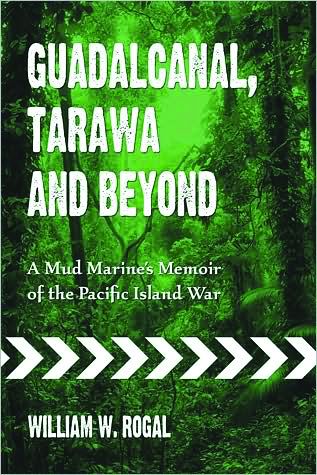 Guadalcanal, Tarawa and Beyond: A Mud Marine’s Memoir of the Pacific Island War by William W. Rogal, McFarland & Company Publishers, Jefferson, NC, 2010, 214 pp., photos, maps, index, $29.95, softcover.
Guadalcanal, Tarawa and Beyond: A Mud Marine’s Memoir of the Pacific Island War by William W. Rogal, McFarland & Company Publishers, Jefferson, NC, 2010, 214 pp., photos, maps, index, $29.95, softcover.
Retired attorney William Rogal has certainly seen his share of combat. As a member of Company A, 1st Battalion, 2nd Marines, 2nd Marine Division, he participated in some of the bloodiest campaigns of World War II—Guadalcanal, Tarawa, Saipan, and Tinian.
His chapter on Guadalcanal is most enlightening. Whenever historians write about the island campaign, all attention is usually given to the 1st Marine Division when the ground action is discussed. Rogal is quick to point out that the 2nd Marine Division also participated.
Rogal’s autobiographical account provides a wonderful personal snapshot into the larger events occurring around him. It is a good addition to the collections of those particularly interested in the Pacific War, from the infantryman’s point of view.
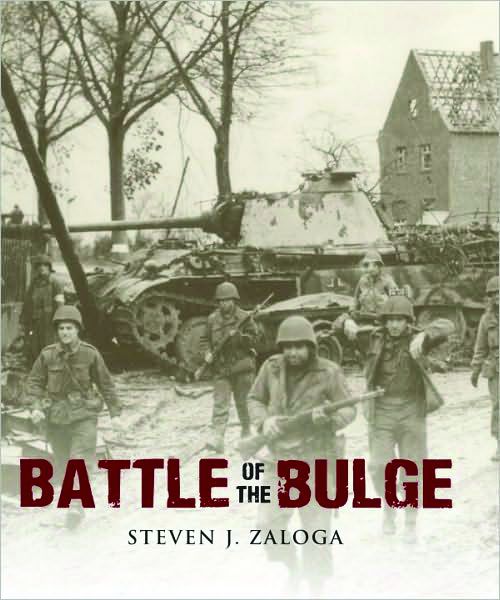 Battle of the Bulge by Steven J. Zaloga, Osprey Publishing, Long Island City, NY, 2010, 280 pp., photos, maps, $25.95, softcover.
Battle of the Bulge by Steven J. Zaloga, Osprey Publishing, Long Island City, NY, 2010, 280 pp., photos, maps, $25.95, softcover.
For more than two months in late 1944 and early 1945, German and Allied forces slugged it out in the bone-chilling cold of the Ardennes Forest in Belgium, Luxembourg, and France. The snow-covered region saw savage combat as Nazi troops attempted to stem the Allied drive deeper into Europe.
The enemy offensive enjoyed some early success when it began on December 16, 1944, especially when severe weather conditions prevented the Allies from supporting the ground forces around the small Belgian hamlet of Bastogne. However, when the skies cleared the full weight of the American and British juggernaut drove Hitler’s army back to the Siegfried Line.
Osprey’s latest offering includes numerous photographs of the fighting and three-dimensional maps of the area that will assist the reader in following the movements of the two armies.
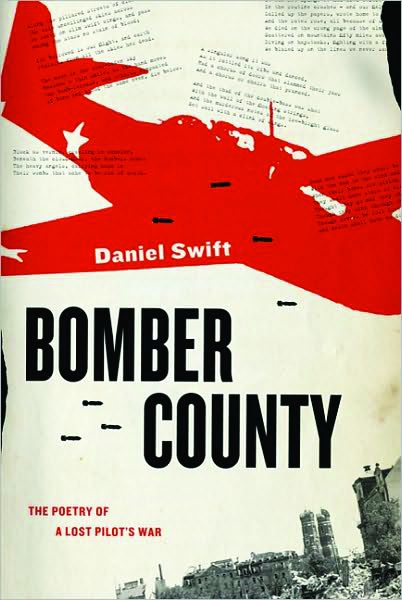 Bomber County: The Poetry of a Lost Pilot’s War by Daniel Swift, Farrar, Straus and Giroux, New York, 2010, 304 pp., notes, photos, $26.00, hardcover.
Bomber County: The Poetry of a Lost Pilot’s War by Daniel Swift, Farrar, Straus and Giroux, New York, 2010, 304 pp., notes, photos, $26.00, hardcover.
While investigating the death of his grandfather in World War II, author Daniel Swift made the remarkable connection between poetry and war. In June 1943, James Eric Swift, a pilot with No. 83 Squadron of the Royal Air Force, took off in the inky blackness of the English night for a bombing raid over Munster, Germany.
Swift’s Avro Lancaster bomber crashed, and his body later was washed ashore on the northern coast of Holland. Thirty-one other airmen from various countries also came on shore in the same manner after their aircraft went down.
The author discovered a link with the bombing campaigns of the war and the poetry written in an attempt to express the feelings of those who did the bombing and those who experienced it. It is an interesting point of view—and an absorbing account.
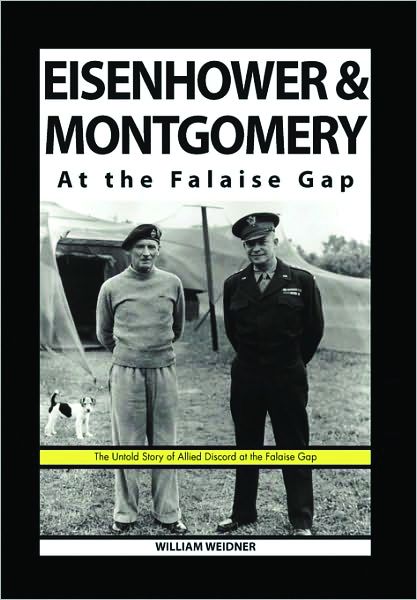 Eisenhower & Montgomery at the Falaise Gap by William Weidner, Xlibris Corporation, Bloomington, IN, 2010, 400 pp., photos, index, maps, $29.99, hardcover.
Eisenhower & Montgomery at the Falaise Gap by William Weidner, Xlibris Corporation, Bloomington, IN, 2010, 400 pp., photos, index, maps, $29.99, hardcover.
The Battle of the Falaise Gap fought in August 1944 has often been referred to as the killing fields for the German Army. By destroying the bulk of the German Army in the West, the Allies opened the road to strike deeper into Europe and at the heart of Germany itself.
However, writer William Weidner strongly disagrees with this analysis of the events at the Falaise Gap, stating that some historians have purposely whitewashed what really happened. He asserts that British General Bernard Montgomery “ordered the Americans to halt on the inter-Army Group boundary just south of Argentan.” With this order, Weidner contends that “the Anglo-American military alliance was compromised.”
Weidner’s book is a good read and focuses on the often rocky relationship between Montgomery and Supreme Allied Commander General Dwight D. Eisenhower. The eccentric British general possessed a strong dislike for Americans and often disobeyed orders. Eisenhower had to proceed with extreme caution when dealing with him so as not to incur the displeasure of the British government.
In March 1945, Eisenhower finally took back control of the U.S. Ninth Army from Montgomery, to whom its command had been given during the Battle of the Bulge, and gave priority to General Omar Bradley’s U.S. 12th Army Group. This, in Weidner’s opinion, brought “a swift end to war.”
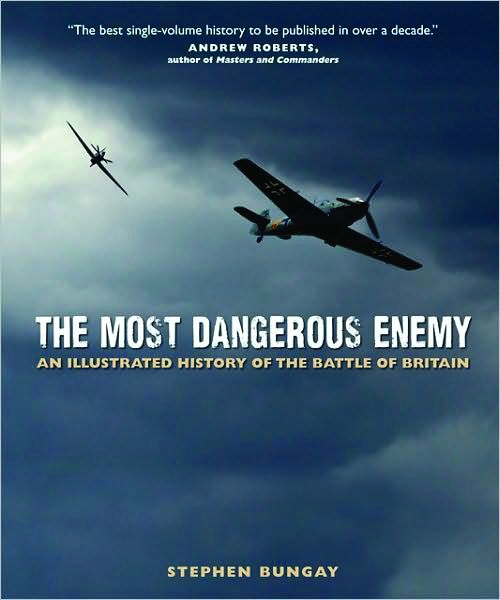 The Most Dangerous Enemy: An Illustrated History of the Battle of Britain by Stephen Bungay, Zenith Press, Minneapolis, MN, 2010, 272 pp., photos, maps, index, $40.00, hardcover.
The Most Dangerous Enemy: An Illustrated History of the Battle of Britain by Stephen Bungay, Zenith Press, Minneapolis, MN, 2010, 272 pp., photos, maps, index, $40.00, hardcover.
This coffee table book has some incredible photos and maps detailing the nearly four-month long air campaign commonly referred to as the Battle of Britain. Unit designations, types of aircraft, leaders, strategies, and the combat itself are all discussed.
With the defeat and humiliating evacuation of British forces from Dunkirk, German leader Adolf Hitler thought he had Great Britain on her knees. However, the maniacal Nazi dictator failed to appreciate the extraordinary will of the British people. Outnumbered and outgunned, RAF pilots took to the skies and battled the experienced Luftwaffe pilots over their homeland. By October, they had won. It was one of the major turning points of World War II.
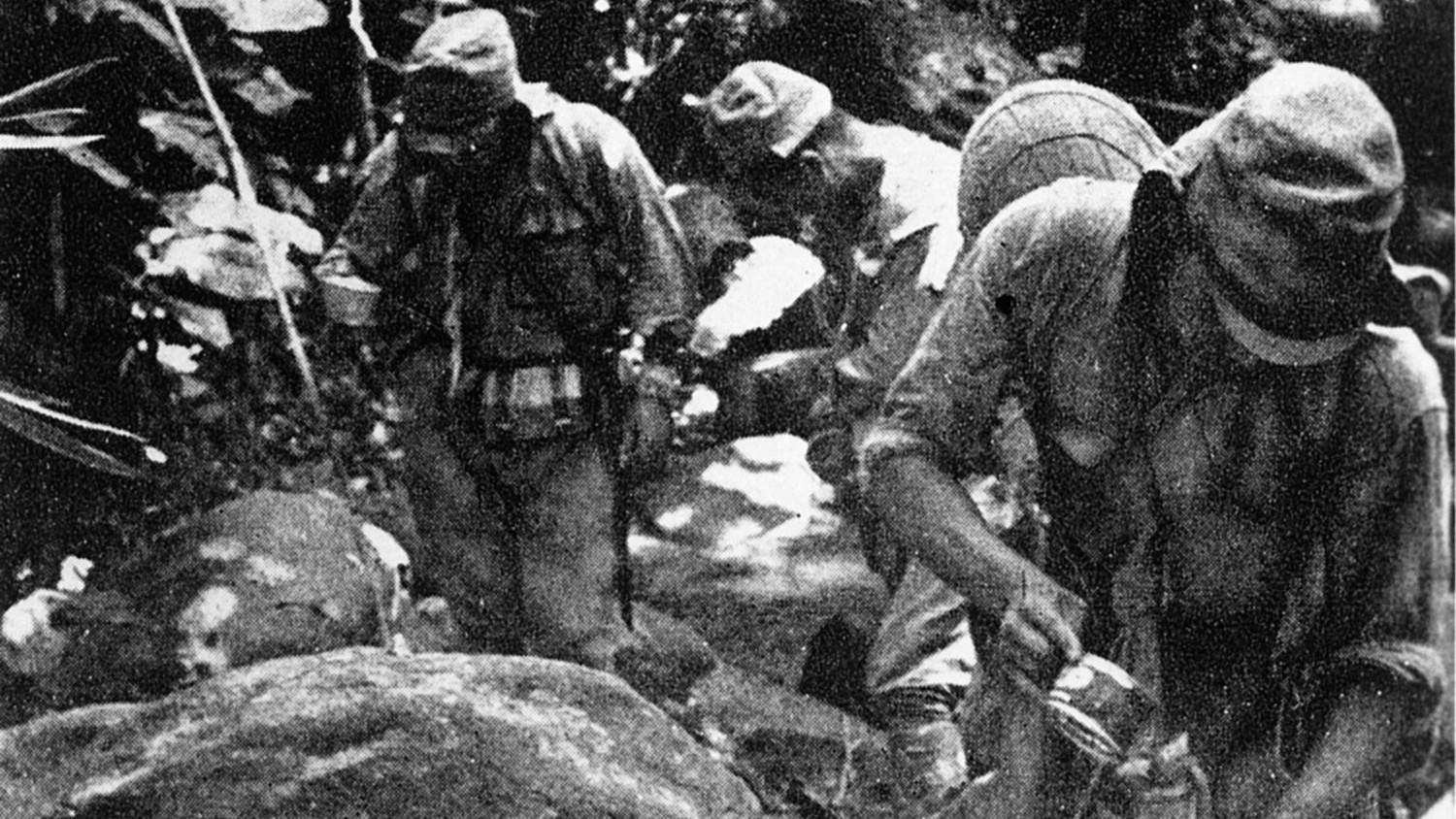
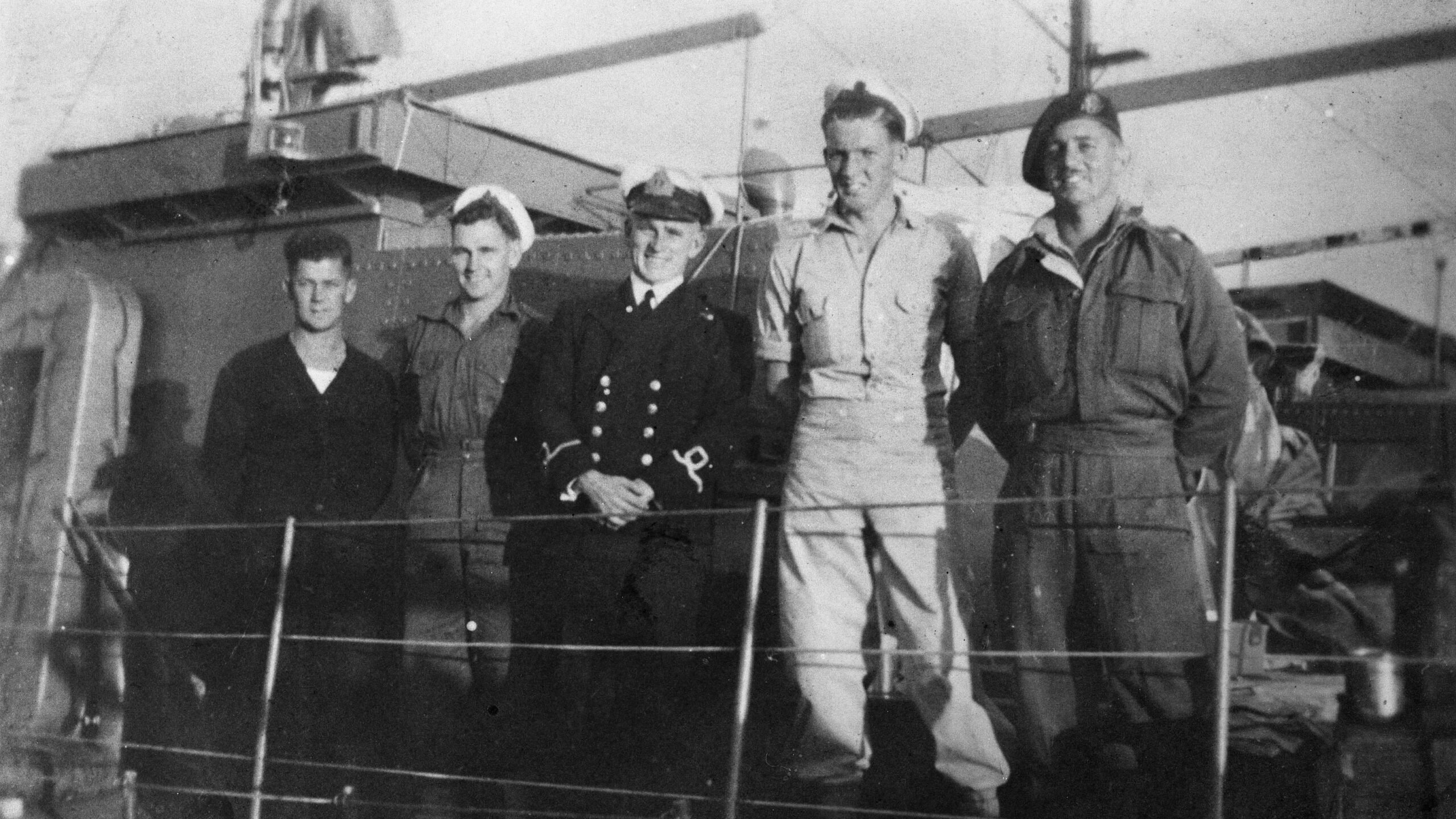
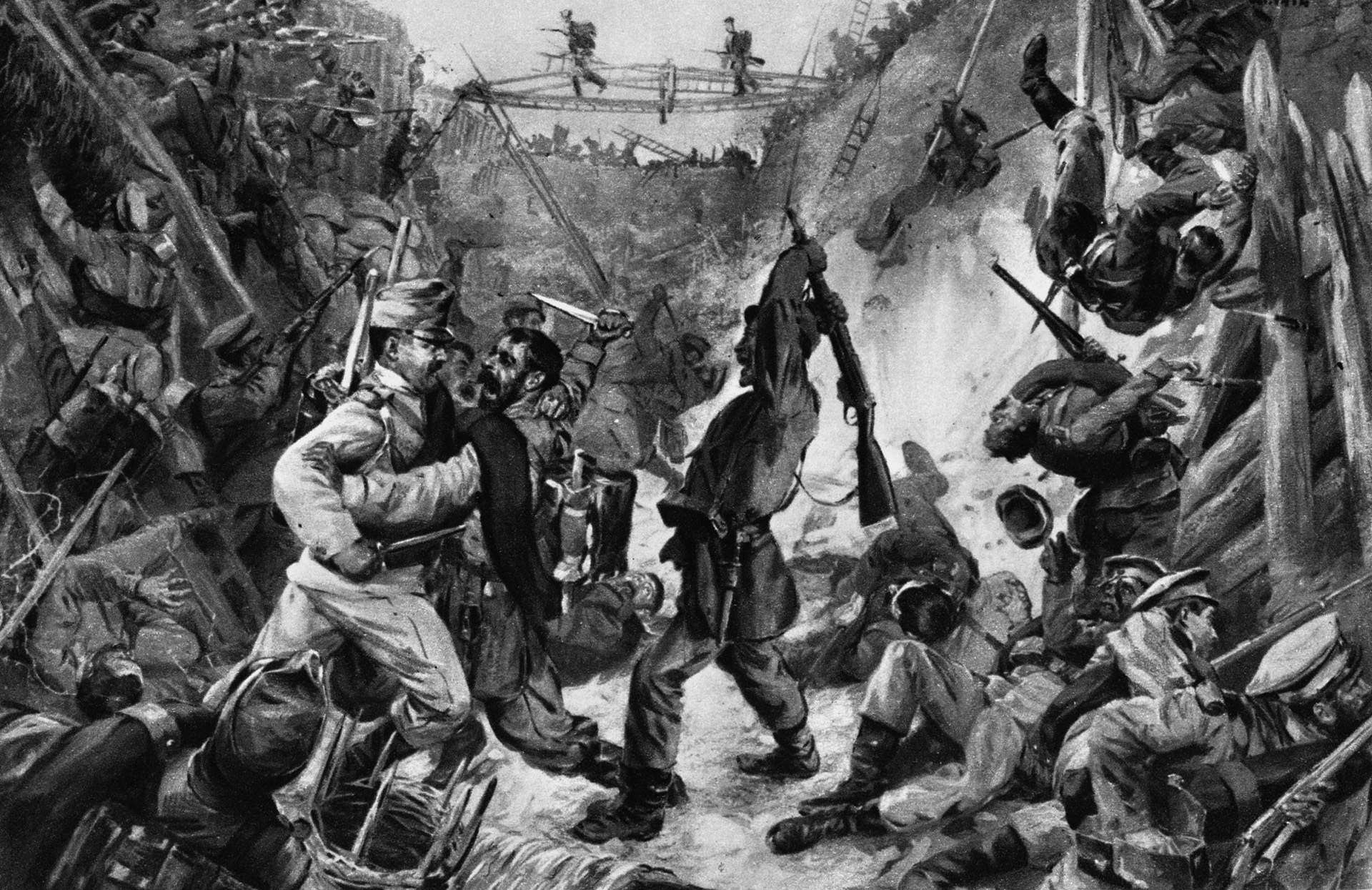
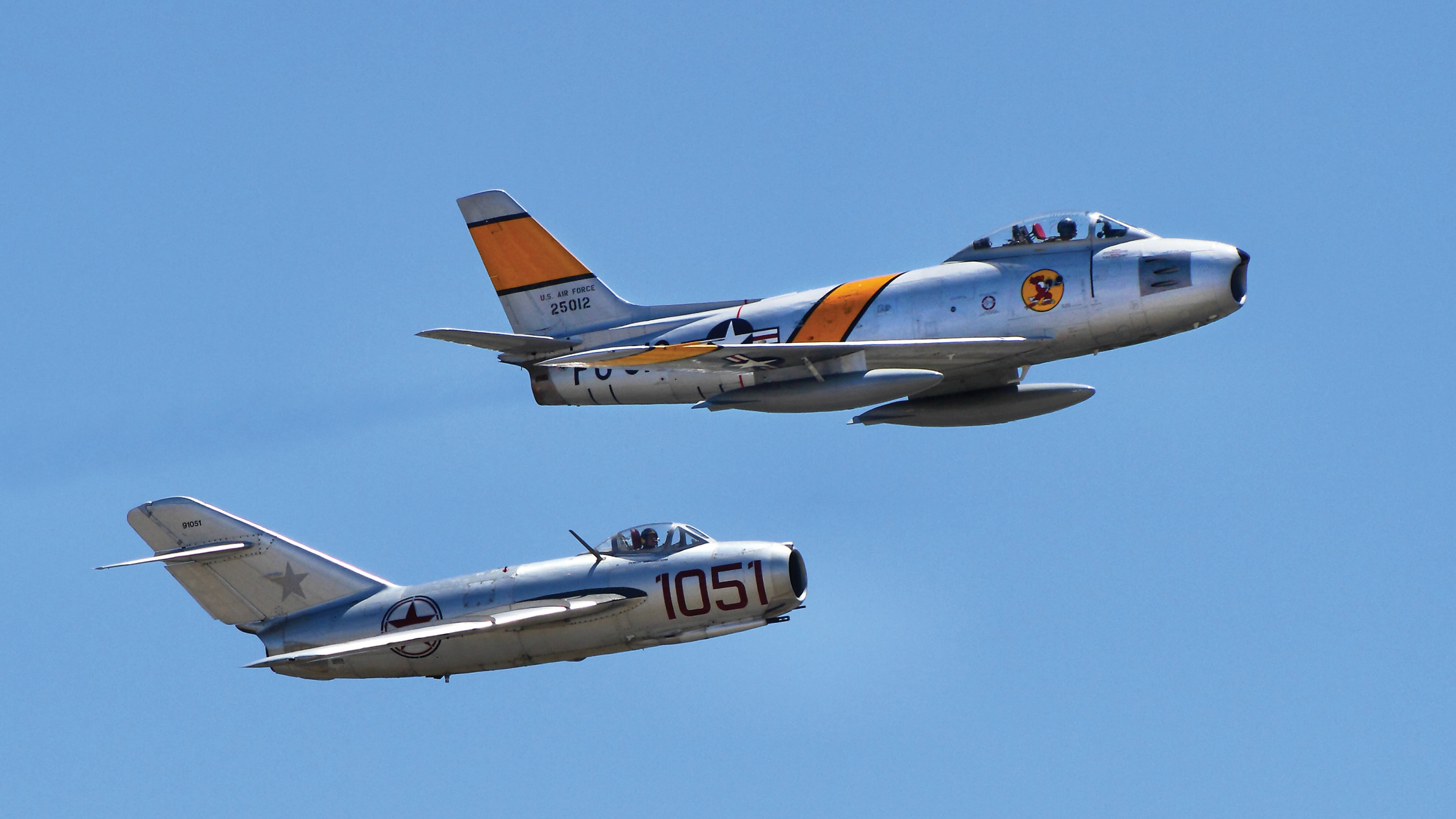
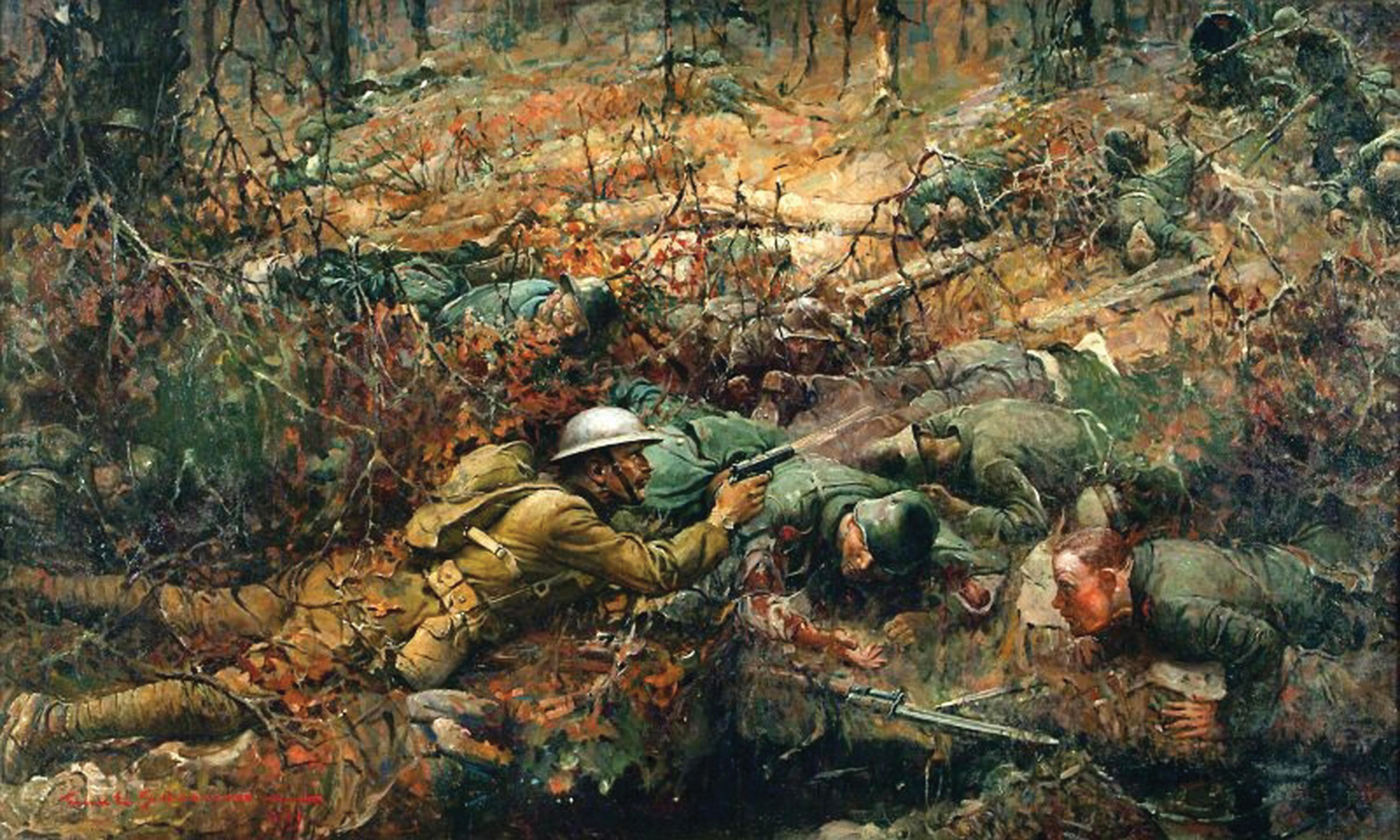

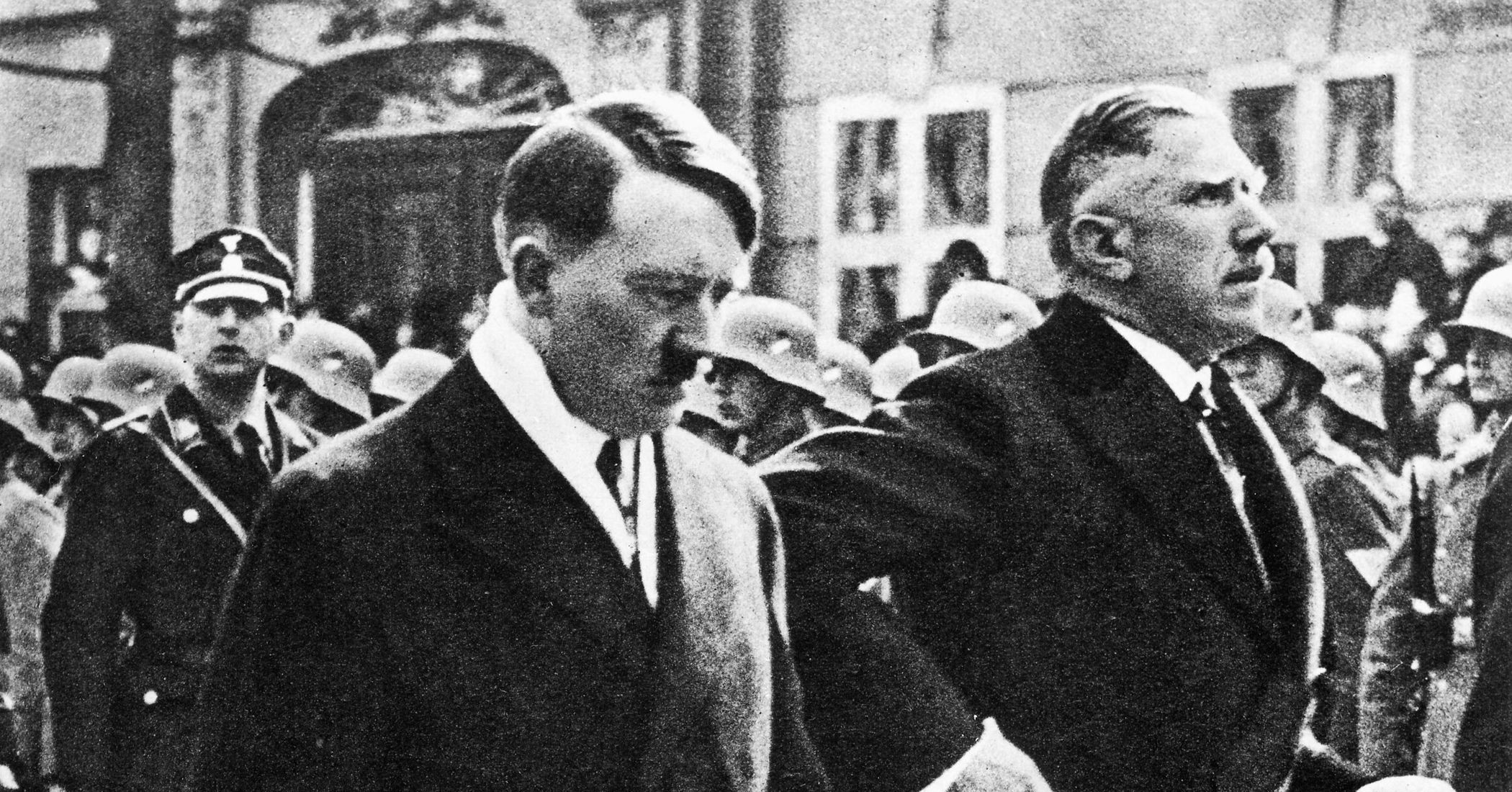
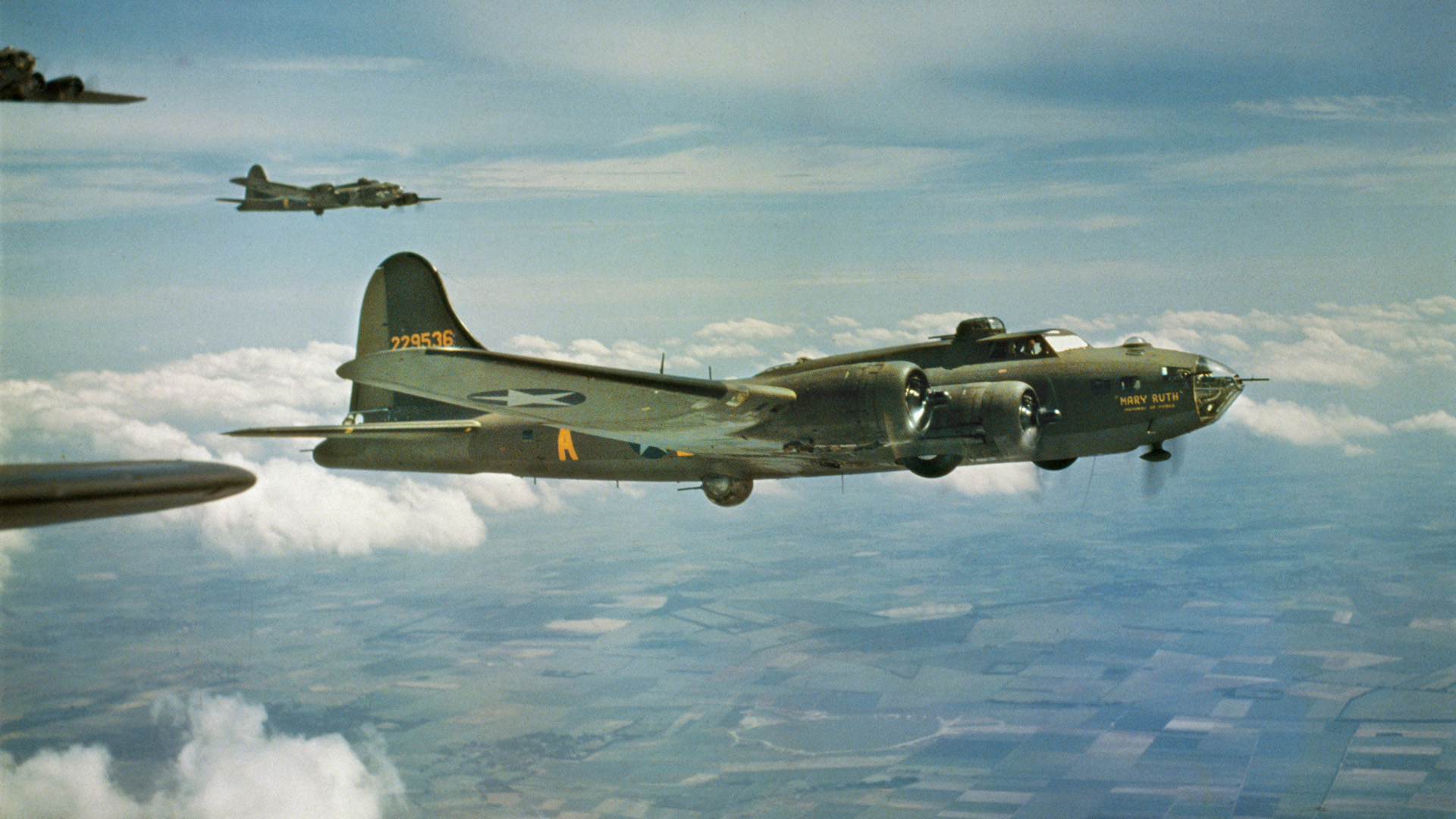
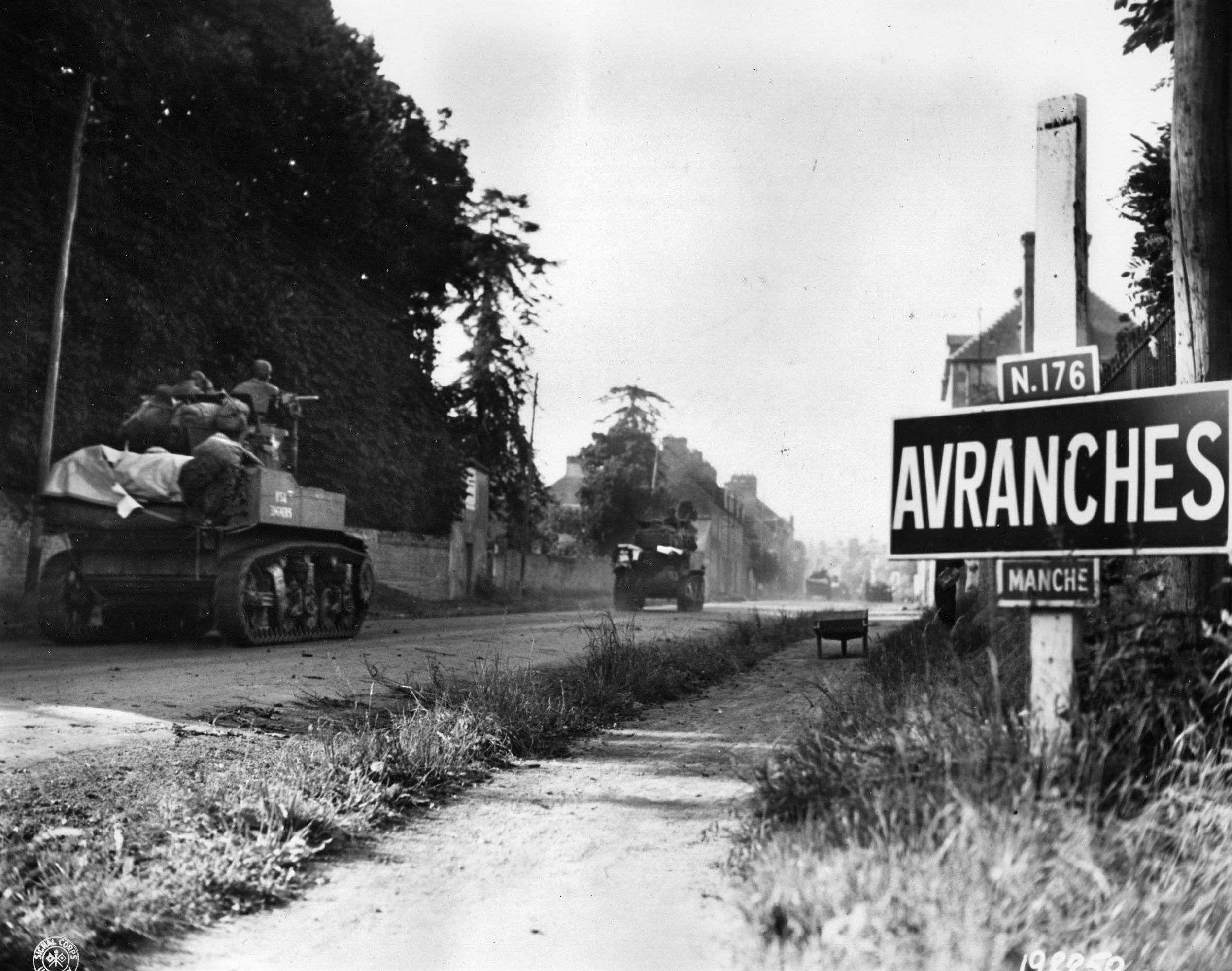
Join The Conversation
Comments
View All Comments